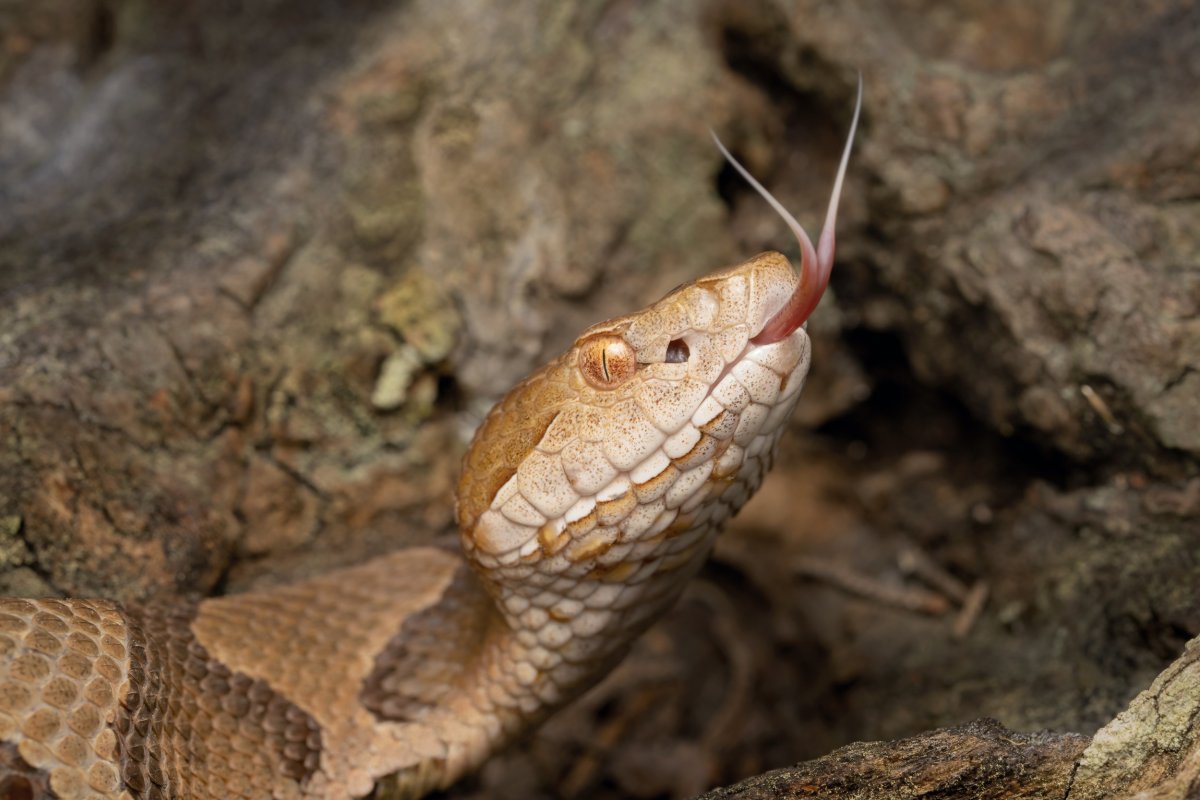A dad's photograph of a venomous snake helped save his 4-year-old son after the boy was bitten during a family outing.
The 4-year-old from Tennesee had been playing on the porch of a cabin while he and his family were on a camping trip over Memorial Day weekend near the Georgia border in North Carolina when the snake attacked and bit his ankle, news station WTVC reported.
After realizing his son had been bitten, his father, Jesse Pollom, quickly snapped a photo of the snake, showing that it was a venomous copperhead—a type of pitviper native to eastern North America.
Copperhead bites in general are extremely rare, though they bite more people than any other snake species in the United States per year, according to the World Animal Foundation. North Carolina, which boasts six different venomous snake species, is the state with the highest bite rate.

The child was rushed to the hospital where he was treated with 10 vials of antivenom. Pollom's quick thinking helped his son's medical care significantly, according to WTVC.
This is because treatments change depending on the species, meaning it is important for doctors to know for sure what they're combatting.
Although a copperhead's venom is not as potent as other snakes, it can still cause extreme complications if the bite is not treated properly. Fatalities are extremely rare, but the bites can cause extreme swelling, pain and sometimes even the loss of a toe or finger.
After being treated with the antivenom, the boy's ankle continued to swell. He was airlifted to a children's hospital for specialist care, where he was brought to stable condition and went home after three days.
The boy's mother, Stacey Aileen Pollom, said in a Facebook post on May 27 that it will be "a long time" before she goes camping again.
"[We] are so thankful our buddy is stable," she wrote. "Thank you Jesus for modern medicine, sweet family, and incredible health care professionals."
While other species of pit viper, like the rattlesnake, will usually give a warning when they are about to strike, copperhead does not and typically lunges as soon as it feels provoked.
They usually only bite when accidentally touched or stepped on.
Children occasionally get bitten when playing outdoors barefoot, or in open-toed shoes. They typically tend to be more at risk of the venom due to having weaker immune systems.
As the weather continues to warm up across North America, snake sightings typically become more common. This is because snakes are more active in warmer weather, as they are cold-blooded.
Do you have an animal or nature story to share with Newsweek? Do you have a question about snakes? Let us know via nature@newsweek.com.
Uncommon Knowledge
Newsweek is committed to challenging conventional wisdom and finding connections in the search for common ground.
Newsweek is committed to challenging conventional wisdom and finding connections in the search for common ground.
About the writer
Robyn White is a Newsweek Nature Reporter based in London, UK. Her focus is reporting on wildlife, science and the ... Read more
To read how Newsweek uses AI as a newsroom tool, Click here.





